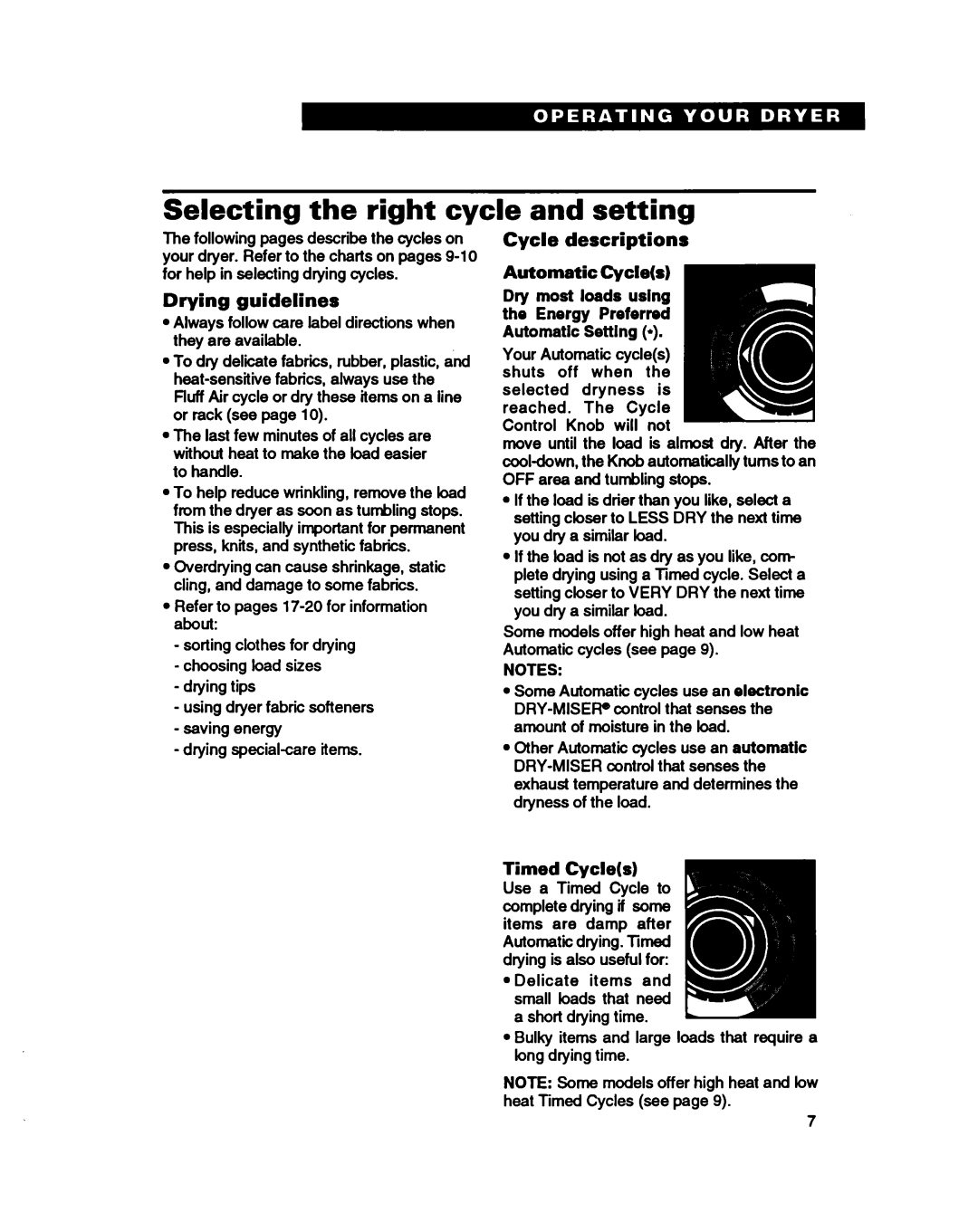
Selecting the right cycle and setting
The following pages describe the cycles on your dryer. Refer to the charts on pages
Drying guidelines
l Always follow care label directions when they are available.
l To dry delicate fabrics, rubber, plastic, and
l The last few minutes of all cycles are without heat to make the load easier to handle.
l To help reduce wrinkling, remove the load from the dryer as soon as tumbling stops. This is especially important for permanent press, knits, and synthetic fabrics.
l Overdrying can cause shrinkage, static cling, and damage to some fabrics.
l Refer to pages
-sorting clothes for drying
-choosing load sizes
-drying tips
-using dryer fabric softeners
-saving energy
-drying specialcare items.
Cycle descriptions
Automatic Cycle(s)
Dry most loads using the Energy Preferred Automatic Setting p).
Your Automatic cycle(s) shuts off when the selected dryness is reached. The Cycle Control Knob will not
move until the load is almost dry. After the
lIf the load is drier than you like, select a setting closer to LESS DRY the next time you dry a similar load.
lIf the load is not as dry as you like, corn plete drying using a Timed cycle. Select a setting closer to VERY DRY the next time you dry a similar load.
Some models offer high heat and low heat Automatic cycles (see page 9).
NOTES:
l Some Automatic cycles use an electronic
l Other Automatic cycles use an automatic
Timed Cycle(s)
Use a Timed Cycle to complete drying if some items are damp after Automatic drying. Timed drying is also useful for: l Delicate items and
small loads that need a short drying time.
l Bulky items and large loads that require a long drying time.
NOTE: Some models offer high heat and low heat Timed Cycles (see page 9).
7
